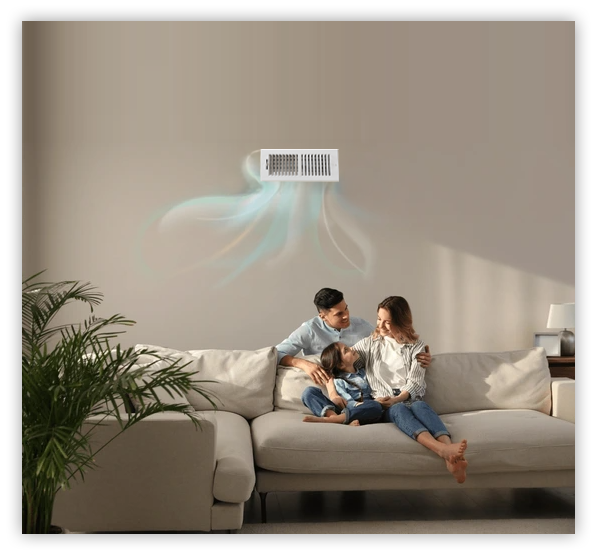Air Delivery

Efficient air delivery is essential for distributing conditioned air evenly throughout your home or business.
Efficient air delivery is essential for ensuring every corner of your home or business receives the proper amount of conditioned air, enhancing both comfort and energy efficiency. This process relies on well-designed duct systems and properly calibrated blower motors to distribute air evenly. Advanced systems, such as variable-speed blowers, offer precise airflow, improving both performance and air quality while reducing energy consumption.
At Thorpe Heating and Cooling, we specialize in optimizing air delivery systems, from testing and balancing ductwork to recommending upgrades tailored to your needs. Schedule a consultation today and discover how our team can create a more comfortable and energy-efficient space for you. Our HVAC company proudly serves the Winter Haven, Lakeland, and Bartow, FL areas.
Air delivery concerns how much of the comfort that you pay for each month is delivered for your enjoyment. Air delivery for most of us involves a central ductwork system and a fan to move the air.
- Fans must be sized and set to deliver the required amount of air (CFM)
- There are three types of fans called (Blowers)
- Duct systems are quite complex and must be designed, sized, installed, balanced, and sealed appropriately to operate properly.
- Even perfectly designed and installed systems require balancing from time to time.
- That back bedroom can and should be just as comfortable as the rest of the house.
Understanding Blower Motors
- What is a blower motor? A blower motor is the component of your HVAC system responsible for
circulating air throughout the home. - How does a blower motor work? A blower motor uses its fan to take the heated or cooled air and circulate it throughout your home. Depending on the kind of blower, it either delivers airflow all at once in on-and-off bursts or it’s sophisticated enough to vary its speed and dial the airflow up or down to more precisely maintain the temperature displayed on the thermostat.
- What are the types of blower motors?
- Variable-Speed: This is the most efficient blower motor available with the ability to slowly ramp the airflow up or down.
This means you can expect precise performance and consistently even temperatures as it only produces the
necessary amount of airflow at any given time. Plus, variable-speed motors can run at a continuous low speed which
allows for better air filtration and humidity removal without excessive energy use. - Power Saver™ Constant-Torque: quieter upgrade over PSC motors that offer greater comfort and 33% more efficiency at a lower price point than variable-speed motors. Constant-torque motors use flexible airflow, resulting in less power consumption than PSC motors.
Although it is worth noting that they still can’t come close to offering the precision of variable-speed motors. - Permanent Split Capacitor (PSC): The simplest of all blower motors in that it cannot vary its speed. This limiting ability to be only “on” or “off” means these motors are less efficient than other options. They’re also often unable to overcome resistance in the ductwork, greatly
decreasing system performance. Because of this, government regulations have resulted in the phasing out of PSC motors
in furnaces beginning in July 2019. All Lennox furnaces have already phased out this type of motor.
- Variable-Speed: This is the most efficient blower motor available with the ability to slowly ramp the airflow up or down.
Did you know?
- An HVAC system cannot be properly charged unless the air flow is within 10% of design airflow.
- A 20% reduction in airflow relates to a 17% reduction in system efficiency.
- Over 80% of homes have deficient air delivery systems.
- Only 10% of HVAC systems are installed properly. (proper airflow-proper charge)

